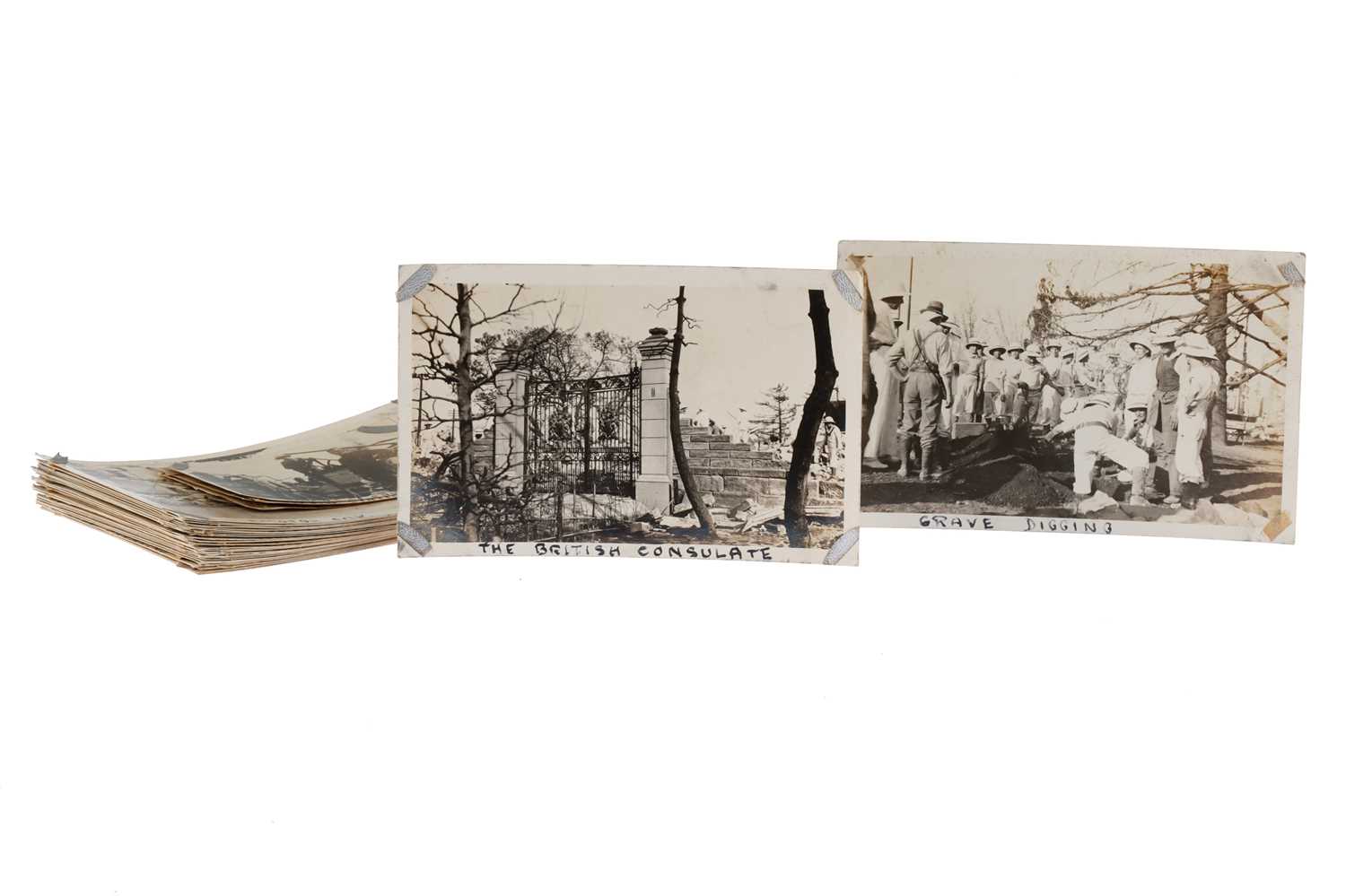9th Jan, 2024 13:00
Photographs & Optical Toys
Set of Photographs of the 1920 Haiyuan Earthquake, China
A Rare set of previously unseen inages taken during the aftermath of the 1920 Haiyuan Earthquake, the images were taken by a navel officer in China at the time, all of the images are printed on postcard paper (13.5cm x 8.5cm), many have handwritten descriptions including Body Snatchers, Awaiting Cremation, More Safe Breaking, A Shop, Some Houses, Was a Hotel, The Consulate Grounds, The Grounds R.N.H., Remains of Bank, The British Consulate, Singers Factory, Remains of a Shop, R.N.H., Another Road, Some More Ruins, Some Ruins, A House, Entrance to Pier, A Working Party, a Bank, Off to Work, Safe Breaking, Grave Digging, Working Party, A Small Piece of Masonary, A Road, The Fire Station, The Burial Service, Remains of a Church, A Motor Car (perhapse), (32 images)
The 1920 Haiyuan earthquake occurred on December 16 in Haiyuan County, Ningxia Province, Republic of China at 19:05:53. It was also referred to as the 1920 Gansu earthquake because Ningxia was a part of Gansu Province when the earthquake occurred. The earthquake caused destruction in the Lijunbu-Haiyuan-Ganyanchi area and was assigned the maximum intensity on the Mercalli intensity scale (XII Extreme). An estimated 258,707~273,407 people died, making it one of the most fatal earthquakes in China and one of the worst disasters in China by death toll.
Over 73,000 people were killed in Haiyuan County, and a landslide buried the village of Sujiahe in Xiji County. Additionally, more than 30,000 people lost their lives in Guyuan County. Almost all the houses collapsed in the cities of Longde and Huining. Damage (VI–X) occurred in seven provinces and regions, including the major cities of Lanzhou, Taiyuan, Xi'an, Xining, and Yinchuan. The earthquake was felt from the Yellow Sea to Qinghai Province and from Nei Mongol south to central Sichuan Province.
Since 2003, Chinese seismologists have calculated the empirical verifiable range of the death toll to be 258,707~273,407. Older sources put the deaths at 234,117 or 235,502. Regardless, it remains one of the most fatal earthquakes in China and one of the worst disasters in China by death toll.
Many more people perished due to the cold: frequent aftershocks led survivors to fear building anything other than temporary shelters, and a severe winter claimed the lives of many who had survived the original earthquake.
The Sufi Jahriyya Muslim Hui leader Ma Yuanzhang and his son died in the earthquake when the roof of the mosque they were in collapsed in Zhangjiachuan.
Sold for £750
Result including buyers premium
A Rare set of previously unseen inages taken during the aftermath of the 1920 Haiyuan Earthquake, the images were taken by a navel officer in China at the time, all of the images are printed on postcard paper (13.5cm x 8.5cm), many have handwritten descriptions including Body Snatchers, Awaiting Cremation, More Safe Breaking, A Shop, Some Houses, Was a Hotel, The Consulate Grounds, The Grounds R.N.H., Remains of Bank, The British Consulate, Singers Factory, Remains of a Shop, R.N.H., Another Road, Some More Ruins, Some Ruins, A House, Entrance to Pier, A Working Party, a Bank, Off to Work, Safe Breaking, Grave Digging, Working Party, A Small Piece of Masonary, A Road, The Fire Station, The Burial Service, Remains of a Church, A Motor Car (perhapse), (32 images)
The 1920 Haiyuan earthquake occurred on December 16 in Haiyuan County, Ningxia Province, Republic of China at 19:05:53. It was also referred to as the 1920 Gansu earthquake because Ningxia was a part of Gansu Province when the earthquake occurred. The earthquake caused destruction in the Lijunbu-Haiyuan-Ganyanchi area and was assigned the maximum intensity on the Mercalli intensity scale (XII Extreme). An estimated 258,707~273,407 people died, making it one of the most fatal earthquakes in China and one of the worst disasters in China by death toll.
Over 73,000 people were killed in Haiyuan County, and a landslide buried the village of Sujiahe in Xiji County. Additionally, more than 30,000 people lost their lives in Guyuan County. Almost all the houses collapsed in the cities of Longde and Huining. Damage (VI–X) occurred in seven provinces and regions, including the major cities of Lanzhou, Taiyuan, Xi'an, Xining, and Yinchuan. The earthquake was felt from the Yellow Sea to Qinghai Province and from Nei Mongol south to central Sichuan Province.
Since 2003, Chinese seismologists have calculated the empirical verifiable range of the death toll to be 258,707~273,407. Older sources put the deaths at 234,117 or 235,502. Regardless, it remains one of the most fatal earthquakes in China and one of the worst disasters in China by death toll.
Many more people perished due to the cold: frequent aftershocks led survivors to fear building anything other than temporary shelters, and a severe winter claimed the lives of many who had survived the original earthquake.
The Sufi Jahriyya Muslim Hui leader Ma Yuanzhang and his son died in the earthquake when the roof of the mosque they were in collapsed in Zhangjiachuan.
Auction: Photographs & Optical Toys, 9th Jan, 2024











